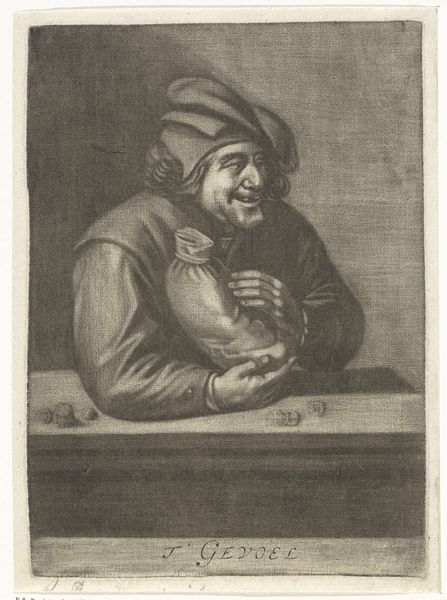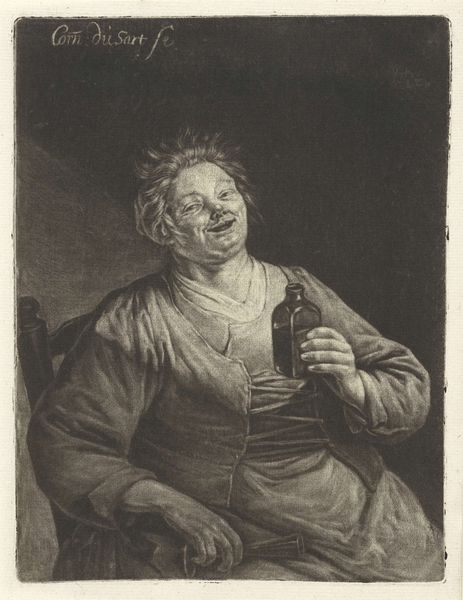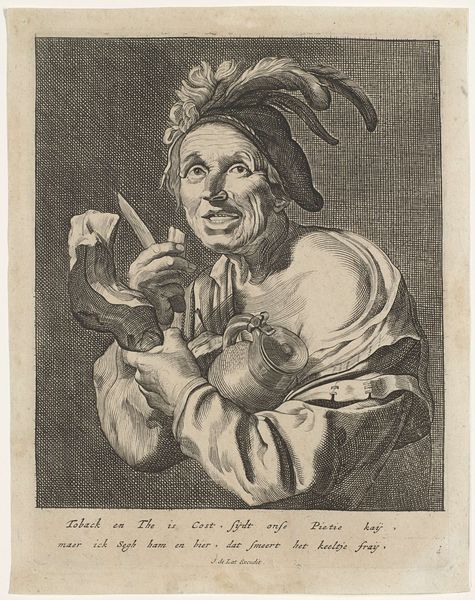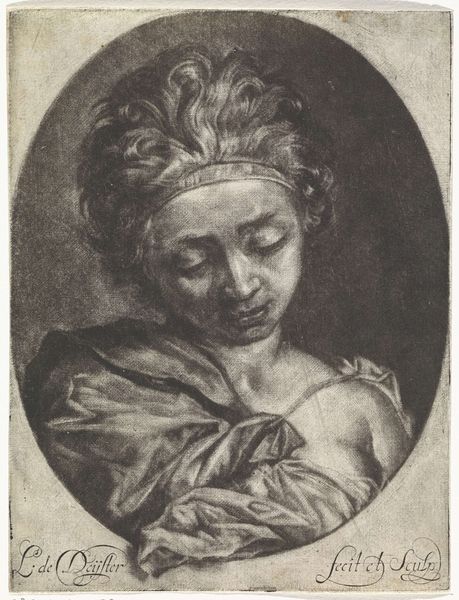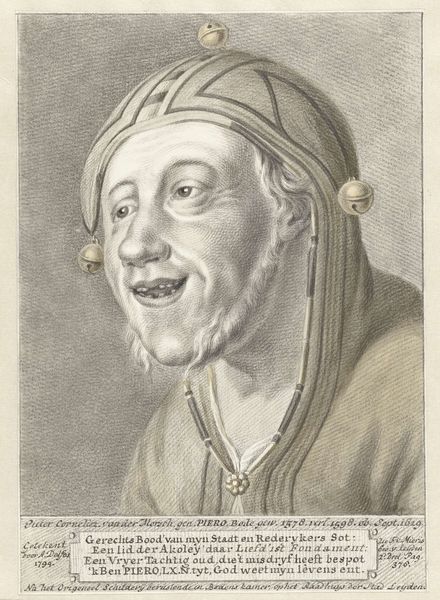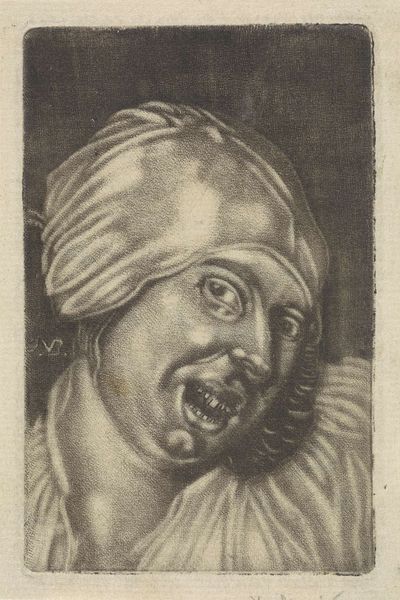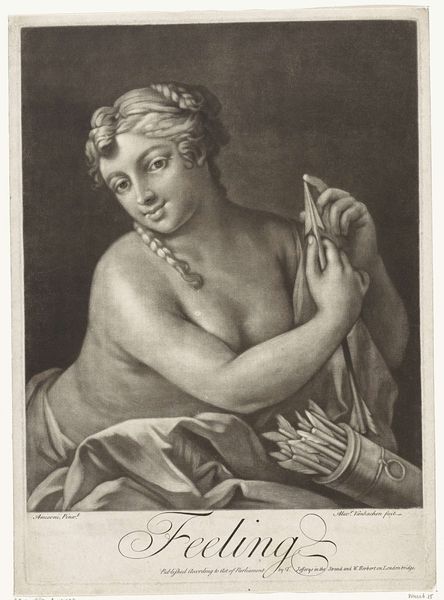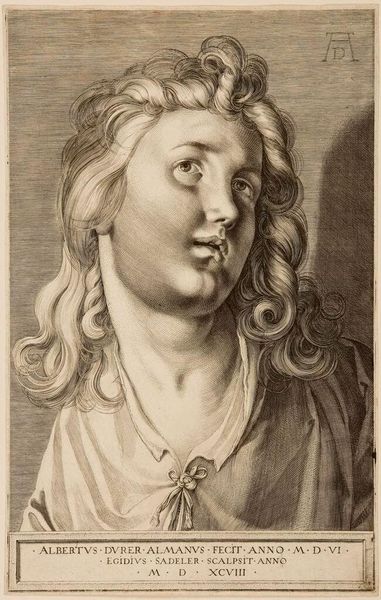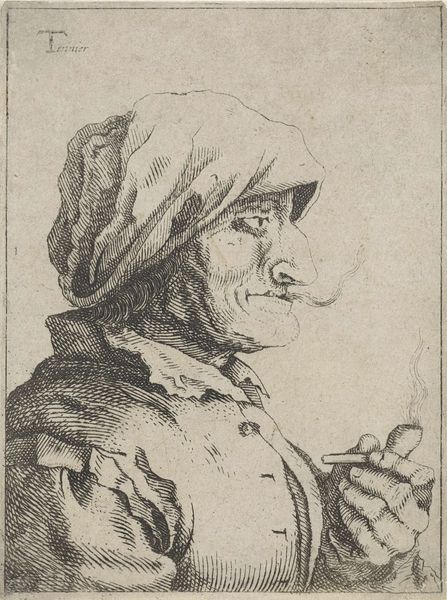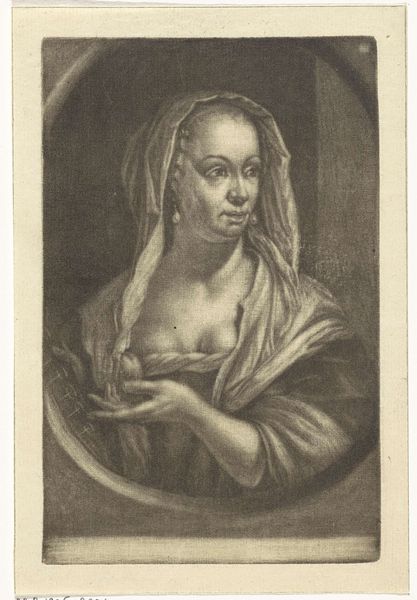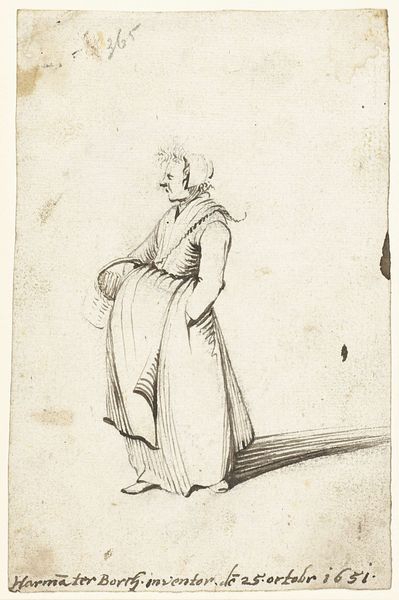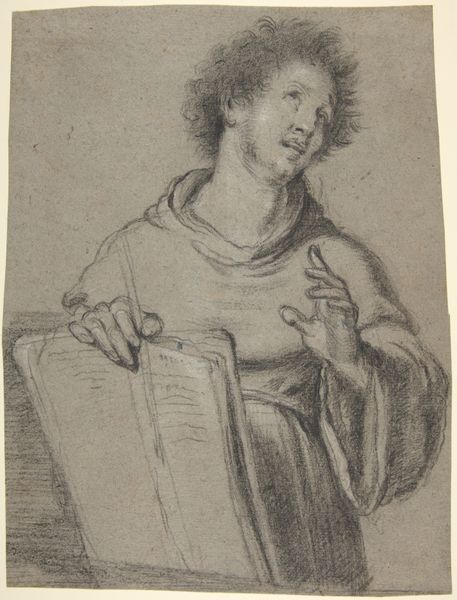
print, engraving
#
portrait
#
pencil drawn
#
dutch-golden-age
# print
#
pencil sketch
#
figuration
#
portrait reference
#
pencil drawing
#
portrait drawing
#
genre-painting
#
engraving
#
realism
Dimensions: height 163 mm, width 122 mm
Copyright: Rijks Museum: Open Domain
Jan Verkolje the Elder made this print, 'Laughing Woman (the Face)', in the Netherlands sometime between 1650 and 1693. The image depicts a working-class woman, identifiable by her headscarf and simple clothing, posed in a somewhat lewd manner. It serves as an example of the Dutch Golden Age’s obsession with genre scenes of everyday life. The art market in the Dutch Republic differed from those of other European countries. Here, art was produced and sold for a burgeoning middle class, rather than aristocratic patrons, meaning that artists had to respond to popular tastes. Verkolje, trained in Amsterdam, would have been aware of the trends in genre paintings and portraiture. It is no accident that he chose this subject, but it is also likely that he would have needed to sell this image through less conventional channels. To understand the meaning of this artwork, we can consult period literature and social histories of the Netherlands. These sources shed light on the social values and power dynamics that shaped the artist's choices.
Comments
No comments
Be the first to comment and join the conversation on the ultimate creative platform.
